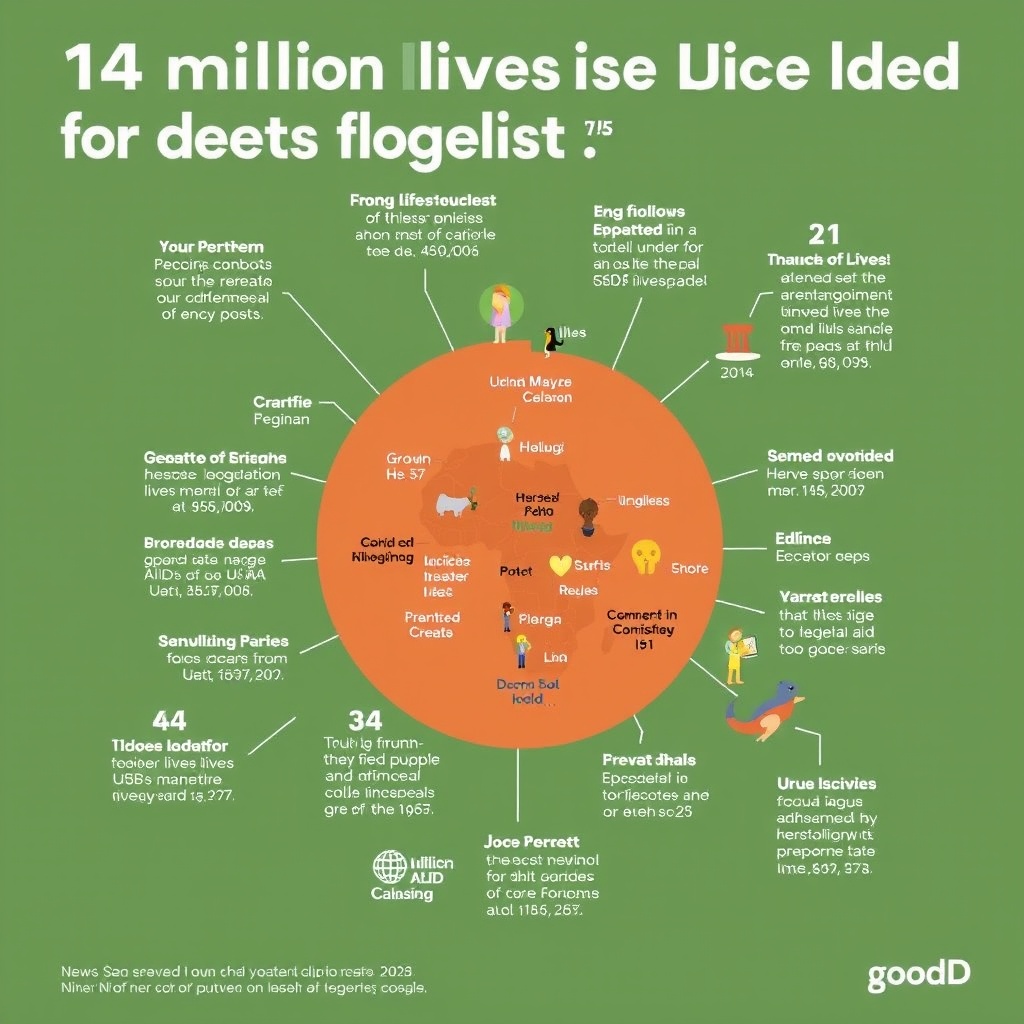Introduction
The United States Agency for International Development (USAID) has been a cornerstone of American foreign policy, providing critical assistance to countries around the world in the form of humanitarian aid, economic development, and global health initiatives. However, recent cuts to USAID's budget under the Trump administration have sparked widespread concern among global health experts, economists, and human rights advocates. A new study has shed light on the devastating potential consequences of these cuts, estimating that up to 14 million lives could be lost due to the reduction in foreign aid. This article will delve into the details of the study, explore the historical context of USAID's impact, and examine the potential long-term effects of these cuts on global health, economic development, and international relations.
The History and Impact of USAID
USAID was established in 1961 with the goal of promoting economic growth, improving health and education, and reducing poverty in developing countries. Over the years, the agency has played a crucial role in saving millions of lives through its various programs, including vaccination campaigns, HIV/AIDS treatment, and maternal and child health initiatives. For example, USAID's efforts to combat HIV/AIDS in sub-Saharan Africa have been particularly successful, with the agency providing antiretroviral treatment to over 14 million people in 2019 alone. Additionally, USAID's support for vaccination programs has helped to eradicate smallpox and nearly eliminate polio worldwide.
The agency's impact extends beyond the realm of global health, with USAID also providing critical support for economic development and humanitarian assistance. In countries such as Afghanistan and Iraq, USAID has worked to rebuild infrastructure, promote economic growth, and support democratic institutions. The agency's efforts have also been instrumental in responding to humanitarian crises, such as the 2010 Haiti earthquake and the 2014 Ebola outbreak in West Africa.
The Study: Estimating the Human Cost of Aid Cuts
The new study, which estimates that up to 14 million lives could be lost due to Trump aid cuts, is based on an analysis of historical data on USAID's programs and their impact on mortality rates in developing countries. The researchers used a combination of statistical models and econometric analysis to estimate the potential effects of the aid cuts on various health outcomes, including child mortality, maternal mortality, and deaths from infectious diseases such as HIV/AIDS, tuberculosis, and malaria.
The study found that the cuts to USAID's budget would have a disproportionate impact on the poorest and most vulnerable populations in developing countries. For example, the researchers estimated that the reduction in aid for maternal and child health programs could lead to an additional 1.5 million child deaths and 100,000 maternal deaths over the next five years. Similarly, the cuts to HIV/AIDS programs could result in an additional 1 million deaths from the disease over the same period.
The Long-Term Consequences of Aid Cuts
The potential long-term consequences of the aid cuts go beyond the immediate human cost, with far-reaching implications for global health, economic development, and international relations. The reduction in foreign aid could lead to a decline in economic growth and stability in developing countries, as well as an increase in poverty and inequality. This, in turn, could have a ripple effect on global economic stability, as trade and investment flows are disrupted and economic opportunities are lost.
The aid cuts could also have significant geopolitical implications, as countries that have come to rely on American assistance may turn to other nations, such as China or Russia, for support. This could lead to a shift in the global balance of power, as the United States cedes influence and leadership in international development and humanitarian affairs.
Furthermore, the reduction in foreign aid could undermine American national security interests, as unstable and impoverished countries become breeding grounds for terrorism and extremism. The 9/11 Commission Report, for example, highlighted the link between poverty, instability, and terrorism, noting that "the greatest danger to the United States and the world is a terrorist network that can strike without warning."
Conclusion
The study's estimate that up to 14 million lives could be lost due to Trump aid cuts is a stark reminder of the human cost of political decisions. The cuts to USAID's budget are not just a matter of fiscal policy; they have real-world consequences for millions of people around the world. As the United States continues to grapple with the challenges of global development and humanitarian assistance, it is essential that policymakers consider the long-term implications of their decisions and prioritize the well-being and dignity of all people, regardless of their nationality or circumstances.
In the face of these challenges, it is crucial that the international community comes together to support the work of USAID and other development agencies, and to ensure that the most vulnerable populations receive the assistance they need to survive and thrive. By investing in global health, economic development, and humanitarian assistance, we can build a more stable, prosperous, and equitable world for all. As the study's findings make clear, the stakes are high, and the consequences of inaction could be catastrophic. It is time for policymakers to take a stand and prioritize the lives and livelihoods of millions of people around the world.


Leave a comment